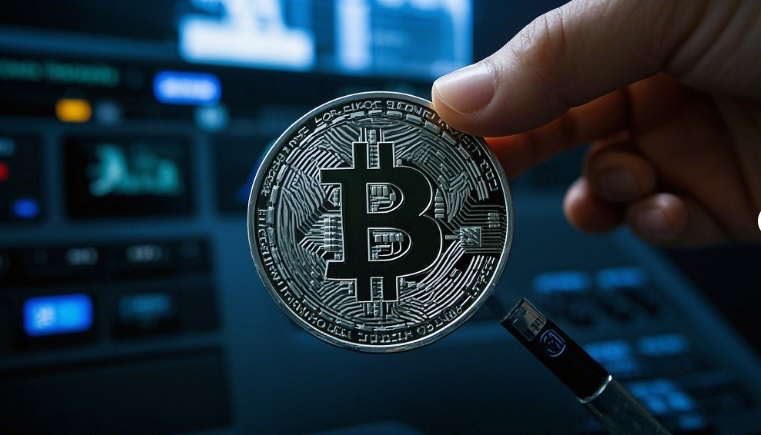"On May 22, 2010, programmer Laszlo Hanyecz traded 10,000 Bitcoins for two pizzas—worth over $800 million at current prices." This legendary story captures Bitcoin's magic and investment potential. If you're eager to join this digital gold revolution but feel overwhelmed by the trading process, don't worry! This guide will walk you through your first Bitcoin transaction in five simple steps. No coding knowledge required—just follow along to transform from a "total newbie" to a "blockchain participant."
Step 1: Set Up Your Digital Wallet (Crypto Vault)
A Bitcoin wallet acts like a virtual safe for storing private keys (passwords) and sending/receiving Bitcoin. Common wallet types include:
Hot Wallets (e.g., Trust Wallet, MetaMask): Internet-connected, ideal for frequent traders. Pros: mobile-payment convenience. Cons: hacker vulnerability.
Cold Wallets (e.g., Ledger, Trezor): Physical offline devices, perfect for long-term holders. Pros: maximum security. Cons: requires hardware purchase.
Setup Guide:
Beginners should start with a hot wallet. After installing Trust Wallet, note the 12-word recovery phrase (your ultimate password). Never store it digitally—write it on paper and lock it away.
Wallet addresses (like bank account numbers) contain 26-35 alphanumeric characters (e.g.,
1A1zP1eP5QGefi2DMPTfTL5SLmv7DivfNa). Always verify the first/last 4 characters before transactions.
Step 2: Choose a Reliable Exchange (Trading Hub)
Exchanges are marketplaces for buying/selling Bitcoin. Prioritize these factors:
Security: Look for two-factor authentication (2FA) and theft insurance.
Fees: 0.1% for makers (limit orders) and 0.2% for takers (market orders) are standard.
Fiat Support: Ensure bank/credit card deposits are available.
Top Exchange Comparison:
| Exchange | Key Advantage | Best For |
|---|---|---|
| Binance | High liquidity | Advanced traders |
| OKX | Chinese-friendly UI | Mainland beginners |
| Coinbase | Regulatory compliance | Global users |
Pro Tips:
Avoid "zero-fee" shady platforms—they may scam you.
Start with a $15 USDT (stablecoin) test purchase to practice.
Step 3: Complete Identity Verification (KYC)
Regulated exchanges require Know Your Customer (KYC) checks to prevent fraud.
Documents Needed:
ID/passport scans
Selfie holding your ID (show shoulders + document details)
Linked bank account for withdrawals
Verification Steps:
Navigate to "Identity Verification" in your exchange app.
Enter personal details (must match ID).
Upload files; approval takes 1–2 hours.
Privacy Protection:
Add watermarks like "For [Exchange] KYC Only" to uploaded photos.
Replace facial recognition with password + Google Authenticator post-verification.

Step 4: Buy Your First Bitcoin (Live Trading)
Here’s how to purchase BTC on OKX:
Deposit Fiat: Tap "Buy Crypto" → "Quick Trade," select Alipay, and enter amount (start with ~$70).
Exchange to BTC: Go to "Spot Trading," search BTC/USDT pair. Choose "Market Order" (instant) or "Limit Order" (set your price).
Check Holdings: Confirm BTC balance under "Assets"—coins remain on the exchange initially.
Advanced Tactics:
Study the "Depth Chart": Green zones indicate buyer demand; red shows seller pressure. Place orders in high-volume areas.
Set "Take-Profit/Stop-Loss" (e.g., auto-sell at 75Korstopat65K if price drops).
Step 5: Transfer to Private Wallet (Ultimate Security)
Exchanges aren’t banks—remember Mt. Gox and FTX collapses! Self-custody is crucial.
Withdrawal Steps:
Copy your wallet’s receive address (starts with "1" or "bc1").
On the exchange, paste it in the withdrawal section. Select Bitcoin network (other chains = lost coins!).
Enter amount, pay miner fees (medium priority recommended).
Wait for 6 confirmations (~1 hour); track via transaction ID (TxID).
Fee-Saving Hacks:
Transfer between 1–5 AM UTC when network congestion is low (30% cheaper fees).
Test small amounts (0.001 BTC) before large withdrawals.
Key Reminders (Lessons from Crypto Veterans)
Security First: Never share recovery phrases—legitimate support won’t ask for them.
Start Small: Limit initial trades to ≤5% of your total investment to gauge volatility.
Tax Compliance: Report overseas crypto holdings per local laws (even if banned domestically).
Stay Informed: Monitor halving cycles (every 4 years) and ETF approvals—major price catalysts.
Final Words
You’ve now unlocked the gateway to Bitcoin ownership. True winners aren’t reckless speculators but disciplined players who "accumulate low, take profits high, and cold-store securely." Ready to begin? Click your exchange’s "Buy" button and embark on your crypto journey!
(Disclaimer: This is not financial advice. Markets are volatile—invest responsibly.)

















No comments yet